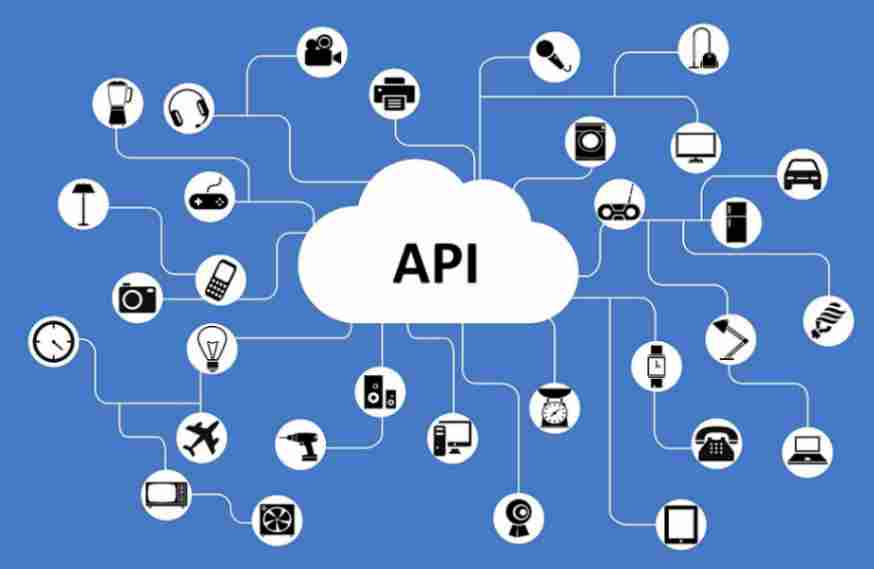In our tech-driven world, APIs (Application Programming Interfaces) are the unsung heroes that allow different software systems to communicate with each other. Whether you’re a developer, a business owner, or just curious about technology, understanding APIs can give you a better grasp of how modern applications work together. This blog aims to simplify APIs, explain their types, and highlight why they’re essential today.
What is an API?
An API, or Application Programming Interface, is like a set of rules that lets one software application talk to another. Think of it as a bridge that connects different software systems, allowing them to share data and functions smoothly.
Types of APIs
APIs come in different types, each with its unique purpose. Here are the most common ones:
1. Web APIs
Web APIs are accessed over the internet using HTTP protocols and are crucial for web services and applications. REST (Representational State Transfer) and SOAP (Simple Object Access Protocol) are the two main types.
- REST APIs: These use standard HTTP methods like GET, POST, PUT, and DELETE and are known for being simple and scalable. They usually return data in JSON or XML format.
- SOAP APIs: These use XML for messages and are known for their robustness and security features, often used in larger enterprise applications.
2. Library or Framework APIs
These APIs come with software libraries or frameworks, giving developers a set of predefined functions to build applications. For example, the React library provides APIs for creating user interfaces, while TensorFlow offers APIs for machine learning.
3. Operating System APIs
Operating system APIs give applications access to hardware and system services, letting them perform tasks like file management, memory allocation, and device control. Examples include Windows API, macOS API, and Linux system calls.
4. Database APIs
Database APIs allow applications to interact with databases, performing operations like creating, reading, updating, and deleting data. Examples include SQL-based APIs (like JDBC for Java) and NoSQL APIs (like MongoDB API).
5. Remote APIs
Remote APIs enable applications to use services hosted on remote servers, crucial for cloud computing. They allow apps to leverage cloud services for storage, computing, and machine learning tasks.
How Do APIs Work?
APIs work by sending requests from one application to another and receiving responses. Here’s a simplified version of how this works:
- Request: An application (the client) sends a request to another application (the server). The request includes an endpoint (a specific URL), an HTTP method (like GET or POST), headers (metadata), and sometimes a body (data).
- Processing: The server processes the request, performing necessary actions like retrieving data from a database or interacting with other services.
- Response: The server sends back a response to the client, including a status code (indicating success or error), headers, and a body (the requested data or an error message).
For example, when you check the weather on an app, the app sends a request to a weather API, which then processes the request and sends back the weather data.
Why Are APIs Important?
APIs are vital for several reasons:
1. Integration
APIs let different software systems work together, enabling businesses to integrate various tools and services seamlessly. For example, an e-commerce site can integrate a payment gateway API to handle transactions.
2. Innovation
APIs allow developers to build on existing technologies, fostering innovation. For instance, using the Google Maps API, developers can create location-based services without needing to build mapping technology from scratch.
3. Scalability
APIs help applications scale by leveraging external services. A mobile app, for example, can use a cloud storage API to handle large volumes of user data efficiently.
4. Efficiency
APIs streamline development by providing reusable components and functions, reducing redundant code and speeding up the development process.
5. Monetization
APIs can be monetized, creating new revenue streams for businesses. Companies can offer premium API access for advanced features or higher usage limits.
Best Practices for Using APIs
To get the most out of APIs, it’s essential to follow best practices:
1. Security
Ensure your APIs are secure using authentication and encryption. Implement measures like API keys, OAuth, and HTTPS to protect sensitive data.
2. Documentation
Provide clear documentation for your APIs, including usage examples, endpoint descriptions, and error handling guidelines. This helps developers understand and use your APIs effectively.
3. Versioning
Use versioning to manage changes in your APIs. This allows you to introduce new features without disrupting existing users.
4. Rate Limiting
Implement rate limiting to prevent abuse and ensure fair usage of your APIs. This involves setting limits on the number of requests within a certain time frame.
5. Monitoring and Analytics
Monitor API usage and performance to identify issues and optimize performance. Use analytics to understand how your APIs are used and find areas for improvement.
How TechDotBit Can Help You Learn the Fundamentals of APIs?
TechDotBit simplifies learning APIs with clear tutorials, interactive examples, and hands-on projects. Enjoy visual explanations through video lessons, expert insights, and community support. Get personalized help in our Q&A sessions, and master APIs effectively with our comprehensive resources. Choose confidently with TechDotBit—reach out today!
Conclusion
APIs are the backbone of modern software development, enabling seamless integration, fostering innovation, and driving efficiency. Whether you’re building a web application, a mobile app, or an enterprise system, understanding and using APIs can significantly enhance your development process and the overall functionality of your applications. By following best practices and keeping up with the latest trends in API development, you can harness the full potential of APIs to create powerful and interconnected software solutions.








